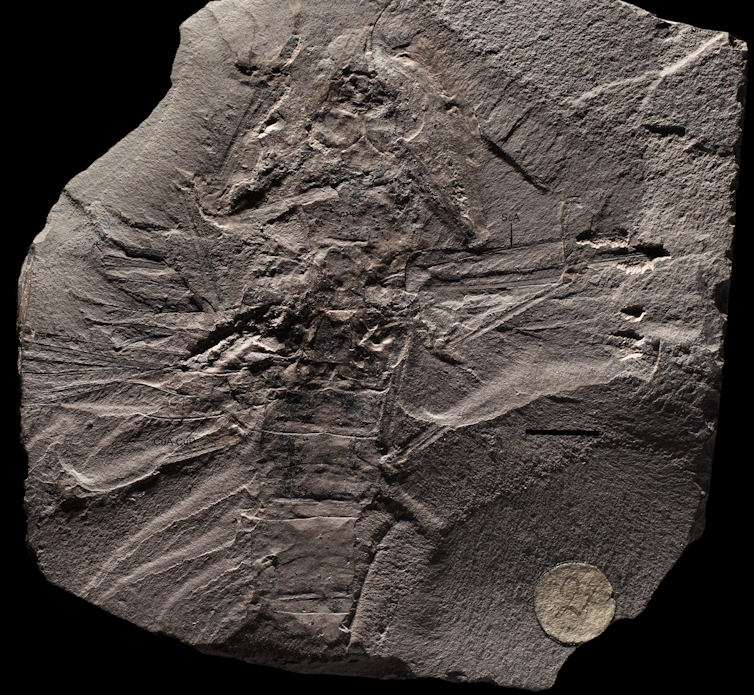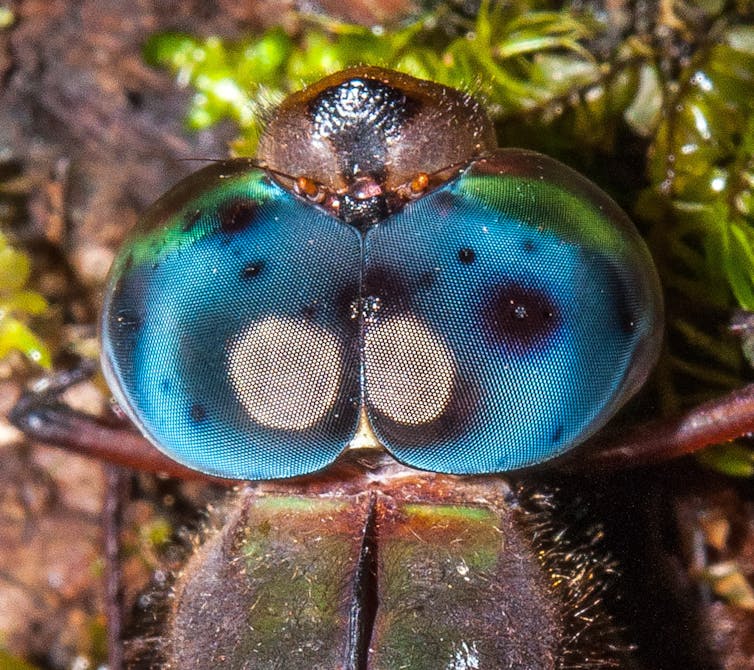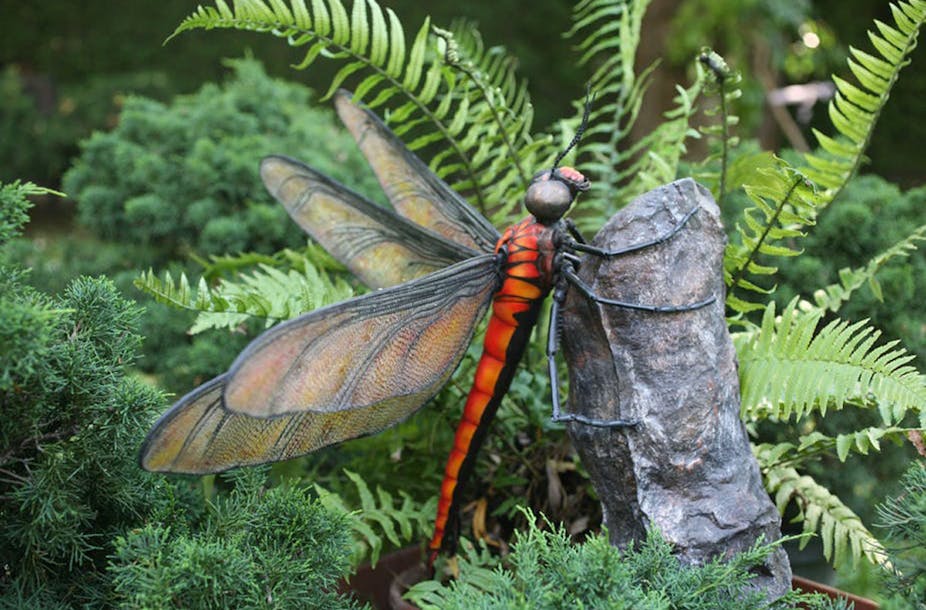Don’t worry. This isn’t an announcement of a new invasion from elsewhere, but a leap into the past in the Paleozoic: the time of giant insects, 100 million years before the dinosaurs, during which insects also had their T-Rex: Carboniferous and Permian giant dragonflies that terrorised the skies of those times, sometimes call “griffenflies”). A short trip back in time to a kind of another Earth in search of insects that were already major actors of the ecosystems.
Meganeura, a star of the French Museum collection
This unique specimen in the world is a giant dragonfly that lived 300 million years ago in the huge equatorial warm forests that at the time covered the center of France. It was almost 40 cm long and 70 cm wingspan. It is one of the largest known insects.
During the Carboniferous (from 360 to 299 million years ago), other insects were also very large, such as cockroaches (Dictyoptera) and Palaeodictyoptera. This gigantism has long been explained by the high percentage of oxygen in the air (twice the current level, i.e., nearly 40%) which would have favoured the physiology of flight during this period. Explanations based on ecological factors more related to the absence of flying predatory vertebrates at this time would explain these large insect sizes. A combination of both phenomena should be considered.
For many millions of years, during Carboniferous, large quantities of plant debris accumulated in shallow waters. Their burial, protected from the air by the sediments that contained them, contributed to the formation of very fossiliferous layers of coals.
Meganeura was described and named by Charles Brongniart in 1885, shortly after its discovery. This dragonfly from the depths of time is the emblem of the city of Commentry in the Auvergne region, the former mining town where it was found. It was long emblematic of the giant insects of the Palaeozoic, remaining the largest known insect until the discovery of a Meganeuridae in the United States in the middle of the 20th century, which are a few centimeters larger.
Were giant dragonflies the Paleozoic’s “hawks”?
While re-examining one of the fossils of the French Museum’s collections, we have been able to go further in the interpretation of the morphology of these organisms.

Comparing them to the current dragonflies, whose hunting techniques split into two main types: those that hunt at post (perched) and those that hunt in flight (like hawks), we can attribute this fossil to the category of hunters in flight. Indeed, large and contiguous eyes, with a field of vision of nearly 360°, a vision upwards and downwards, solid legs with spikes to seize prey, are the characteristics of dragonfly “hawks”.

These giant insects of more than 300 million years ago were formidable hunters in the Paleozoic sky where they were the greatest predators until the end of the Permian, when the first gliding reptiles appeared. This observation complements our vision of the ecosystems of this period during which the conquest of airspace allowed important evolutionary lineages to be established. The great Permian-Triassic crisis (circa 255 million years ago), a major one for all biodiversity, probably also caused the disappearance of these large dragonflies and other giant insects and arthropods that inhabited terrestrial and aquatic ecosystems during the Paleozoic.
This research is published in the journal Nature Scientific Reports on August 14, 2018.
To better represent these emblematic fossils, the MNHN’s Paleontology Gallery will present a life-size 3D reconstruction of Meganeura monyi, associated with the unique fossil of this giant dragonfly.
But the question that remains is the possible existence of giant insects nowadays. Large insects still persist, all in the intertropical regions, with beetles more than 18 cm long, butterflies 20 cm wide, and stick insects (shaped like large twigs) 50 cm long. Despite these large sizes, including the body, none has a wingspan or a body size similar to the Paleozoic insects. The largest dragonfly today does not exceed 20 cm wingspan with a filiform body.
Moreover, this gigantism has long overshadowed the existence of smaller Carboniferous insects and perhaps even prevented from seeking them… It is only recently (and by our team) that the highlighting of these small insects, alongside the famous giants, modified the vision perhaps a little simplistic that we had of the ecosystems of this period.
So do not worry: giant insects are no longer among us. But does size matter when we consider the importance of insects in our current ecosystems?


